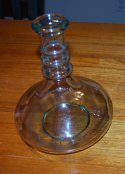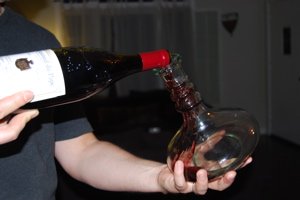|
|
Using a Wine Decanter
 A wine decanter is a glass vessel which is used to hold and serve wine. When you decant wine something magical happens. You turn a pedestrian thing in a showpiece, an elegant presentation of wine. But decanting wine is not all just about appearances, it can also cause a magical transformation in the wine as well, helping to optimize your experience of a fine wine. When learning how to serve wine, a wine decanter can help bring you into the big leagues of fine wine presentation. A wine decanter is a glass vessel which is used to hold and serve wine. When you decant wine something magical happens. You turn a pedestrian thing in a showpiece, an elegant presentation of wine. But decanting wine is not all just about appearances, it can also cause a magical transformation in the wine as well, helping to optimize your experience of a fine wine. When learning how to serve wine, a wine decanter can help bring you into the big leagues of fine wine presentation.
Done with the Wine Decanter page?
Return to the How to Serve Wine page.

|
|
|

